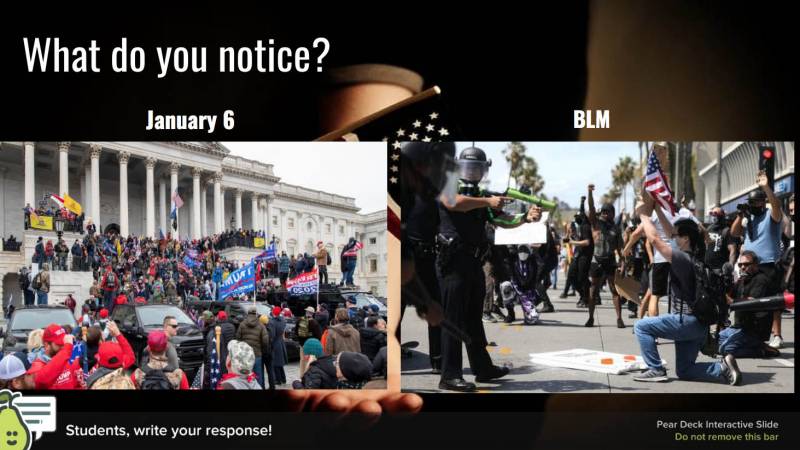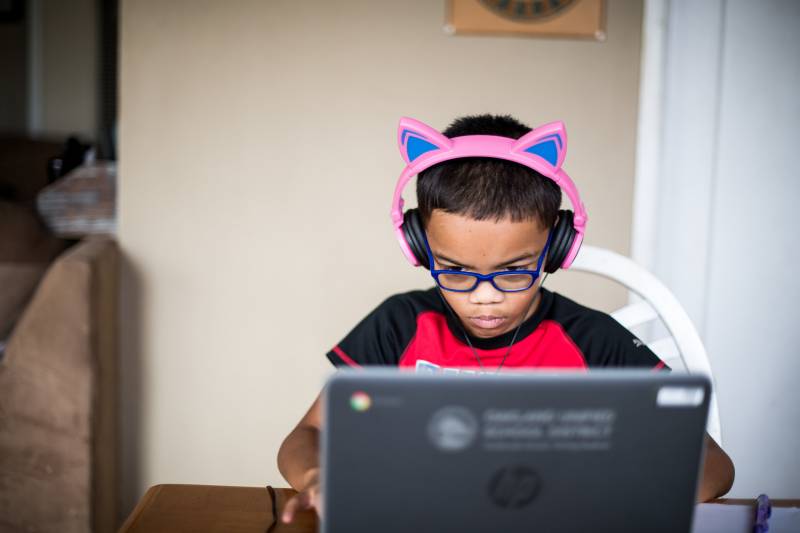By 8:30 a.m. the morning after an angry mob stormed the U.S. Capitol with Confederate flags, Fairfield-Suisun Unified School District teacher Mary Vanasit had prepared a 45-minute lesson on the topic for her third graders.
“What do you notice?” she asked, 15 minutes into the class, as she worked through a slideshow comparing images from the insurrection with those from Black Lives Matter protests this summer.
“The white guy looks pretty happy because he’s taking something,” a student named Ava said of a photo showing a white man grinning and waving as he hoists a lectern emblazoned with the seal of the speaker of the House of Representatives.
“The Black guy feels sort of anxious because he’s getting sprayed with something and turning away so he doesn’t get it in his eyes,” she went on, describing the second photo.

Vanasit closed by thanking her students for opening up. “It’s something hard to talk about,” she said. “But is it important — when things like this happen, should we ignore it and pretend like it didn’t happen? We shouldn’t, huh. Because is anything going to change if we ignore it?”
She posed a final question to the kids: “How can we change the world with each other?”
Throughout her class, Vanasit navigated things smoothly, offering support and empathy. But the discussion shook her. “It was extremely sad and gave me goosebumps,” she said later.
Between the pandemic and the killing of George Floyd, the past year has brought plenty of trauma into the lives of students. This week, California educators once again find themselves looking for ways to support kids while managing their own emotions.
In Hayward, seventh grade teacher Donovan Hall woke up anxious about facing his students on Zoom. “I just didn’t trust that I could kind of keep that contained,” he said.

